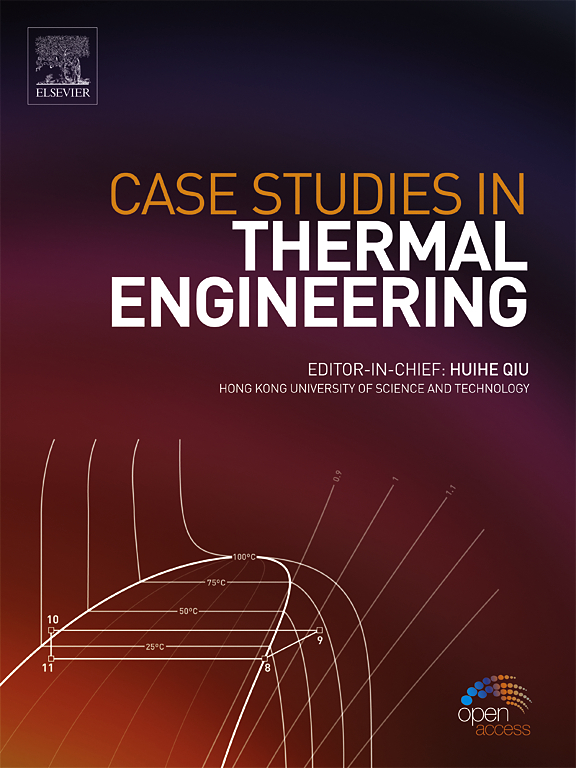Heat transfer study on a stator-permanent magnet electric motor: A hybrid estimation model for real-time temperature monitoring and predictive maintenance
IF 6.4
2区 工程技术
Q1 THERMODYNAMICS
引用次数: 0
Abstract
When electrical machines operate without a specific cooling system, the surrounding environment plays a crucial role in the rise of temperature and the duty cycle of operation. More clearly, a natural convection cooling system with a low value of heat transfer coefficient carries the risk of thermal breakdown, insufficient safety, and reliability. This paper studies the heat transfer aspects of a low-power flux switching permanent magnet (FSPM) motor under natural convection cooling to implement a novel real-time sensor-less temperature monitoring system. Thermal and electromagnetic experiments are carried out to create foundations for transient and steady-state numerical models. A data-driven, deep learning algorithm estimates the core and permanent magnet (PM) eddy current losses in real-time, besides the already available copper and friction losses. Subsequently, a two-node thermal equivalent circuit in a hybrid model with a feed-forward neural network estimates the dynamic temperature profile of windings and PMs. It is indicated that the worst-case estimation error is below 7.5%, and the configuration is applicable under a wide range of operation states and environmental conditions. Lastly, the system, including the power source, FSPM motor, and hybrid temperature estimation unit, will be implemented in MATLAB/Simulink to investigate the fault prediction and operation management capabilities.
定子永磁电机的传热研究:用于实时温度监控和预测性维护的混合估算模型
当电机在没有特定冷却系统的情况下运行时,周围环境对温度上升和运行周期起着至关重要的作用。更明显的是,传热系数值较低的自然对流冷却系统存在热击穿风险,安全性和可靠性不足。本文研究了自然对流冷却条件下小功率磁通开关永磁(FSPM)电机的传热问题,以实现一种新型实时无传感器温度监控系统。通过热和电磁实验,为瞬态和稳态数值模型奠定了基础。除了已有的铜损和摩擦损之外,数据驱动的深度学习算法还能实时估算铁芯和永磁体(PM)的涡流损耗。随后,混合模型中的双节点热等效电路通过前馈神经网络估算出绕组和永磁体的动态温度曲线。结果表明,最坏情况下的估计误差低于 7.5%,并且该配置适用于各种运行状态和环境条件。最后,该系统(包括电源、FSPM 电机和混合温度估算单元)将在 MATLAB/Simulink 中实现,以研究故障预测和运行管理能力。
本文章由计算机程序翻译,如有差异,请以英文原文为准。
求助全文
约1分钟内获得全文
求助全文
来源期刊

Case Studies in Thermal Engineering
Chemical Engineering-Fluid Flow and Transfer Processes
CiteScore
8.60
自引率
11.80%
发文量
812
审稿时长
76 days
期刊介绍:
Case Studies in Thermal Engineering provides a forum for the rapid publication of short, structured Case Studies in Thermal Engineering and related Short Communications. It provides an essential compendium of case studies for researchers and practitioners in the field of thermal engineering and others who are interested in aspects of thermal engineering cases that could affect other engineering processes. The journal not only publishes new and novel case studies, but also provides a forum for the publication of high quality descriptions of classic thermal engineering problems. The scope of the journal includes case studies of thermal engineering problems in components, devices and systems using existing experimental and numerical techniques in the areas of mechanical, aerospace, chemical, medical, thermal management for electronics, heat exchangers, regeneration, solar thermal energy, thermal storage, building energy conservation, and power generation. Case studies of thermal problems in other areas will also be considered.
 求助内容:
求助内容: 应助结果提醒方式:
应助结果提醒方式:


